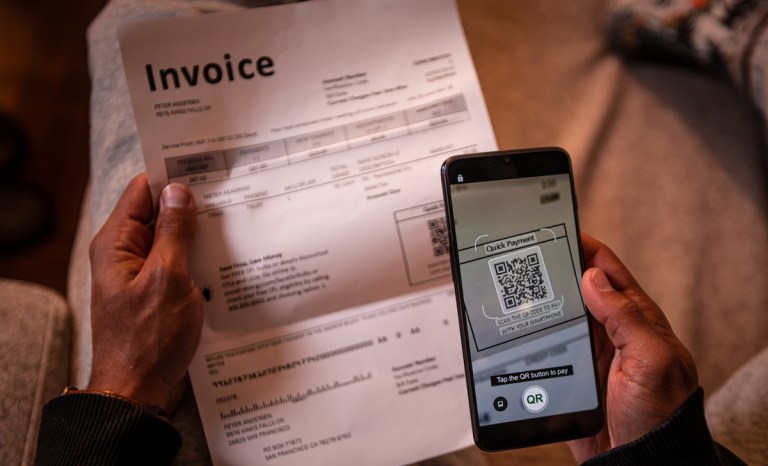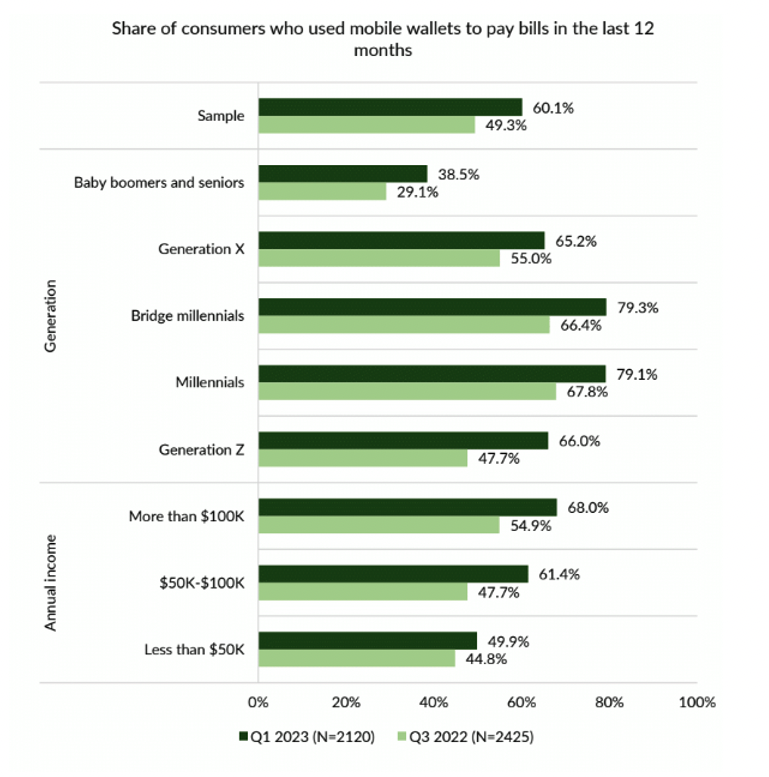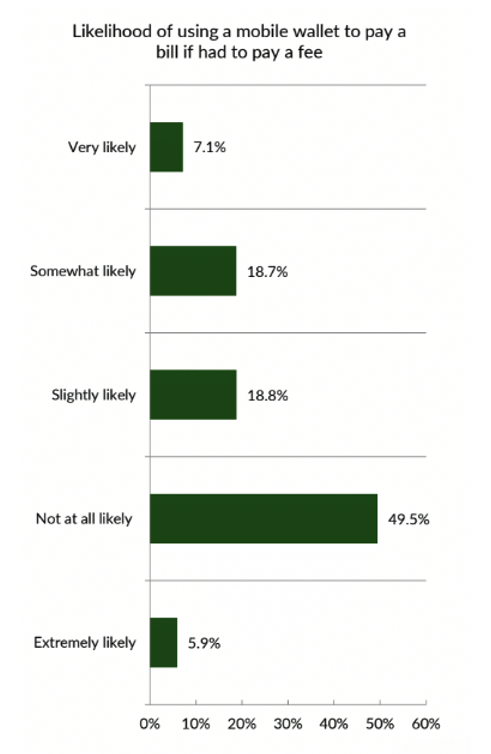
Half of consumers won’t pay bills with mobile wallets if they must pay extra.

Mobile wallet use for bill pay is growing across age demographics, with consumers preferring the speed and convenience it provides over legacy methods such as writing paper checks. The rate of this growth is noted in “Digital Bill Payments: Frequent Mobile Wallet Bill Pay Users the Most Satisfied,” a PYMNTS and ACI Worldwide collaboration. Consumers’ use of mobile wallet bill pay across demographics has risen 11 percentage points between the third quarter of 2022 and the first quarter of 2023.
Fifty-one percent of consumers who use mobile wallets to pay bills opt to do so via PayPal, making it the most popular method. However, the platform’s convenience, along with most other FinTech mobile wallets with bill pay options comes with a catch: fees. Research for the “Mobile Wallet Bill Pay” report found that 46% had to pay either a flat fee, a percentage of the bill or some combination of both to PayPal to do so. This rate was consistent with many non-institutional mobile wallet bill pay features, with users paying an average of $14.80 in flat fees or 1.5% of the bill amount.

While nearly half of consumers forked over the fee, another half said it’s not likely that they would use a mobile wallet to pay a bill if there was a fee involved.
This intersection of consumers who are both wanting to use mobile wallets for bill pay but don’t want to pay a fee may offer an advantage to financial institutions willing to step in.
In an interview with PYMNTS’ Karen Webster earlier this year, ACI Worldwide Executive Vice President of Digital Payments Sanjay Gupta described where financial institutions could have an advantage over FinTechs in appealing to these fee-avoidant consumers.
“For the consumer using digital wallets to pay bills, it’s an opportunity to engage with the credit union or bank or utility company — and in the process, pay your bills,” he said at the time.
I’ve got peace of mind, and I know that I won’t ‘run late’ on my mortgage payment or electricity or gas payment or auto loan,” he added.